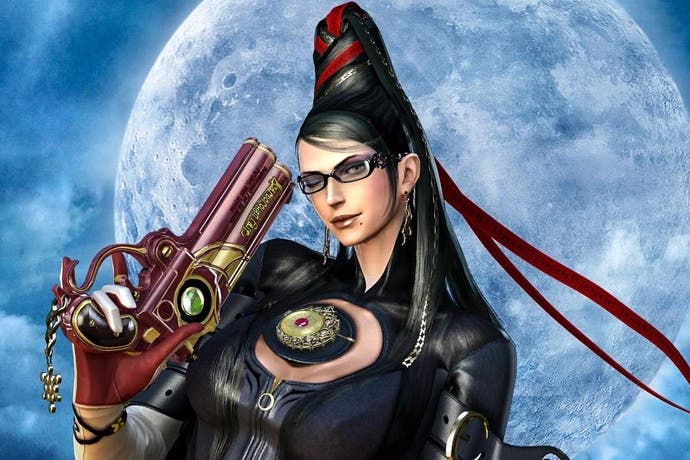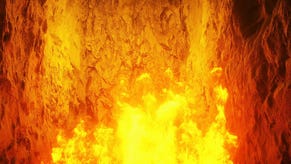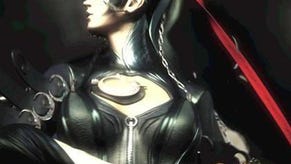Bayonetta PC runs beautifully - even on old hardware
A five-year-old budget GPU hits 1080p60, so what about more modern kit?
After years of hoping and waiting, Sega has finally delivered the goods - Bayonetta is now available on PC. The pitch is simple enough: this is the original game without any of the flaws inherent to the console versions, and with PC's ability to scale up resolution. To say it runs smoothly on a vast range of hardware would be an understatement - we could hit something approaching a locked 1080p60 on a 1GB Radeon HD 7770, a budget GPU when it was released way back in 2012. On more recent graphics hardware, the only way is up.
Let's start with the options - as a game designed specifically for consoles of the past, we didn't expect much in the way of detail settings but there are a few tweakables of note. You can adjust texture and shadow quality as you see fit and the game even reports VRAM usage based on your current settings. Well, at least it tries to report it - the numbers are significantly lower than those registered by monitoring tools like MSI Afterburner. There isn't a tremendous difference between the options available, the exception being dynamic shadow quality, which varies dramatically based on how you set it.
So, what's new over Xbox 360? Ambient occlusion is a new addition, and MSAA up to an impossible-sounding 16x is also featured - though curiously, this does not appear to work whatsoever on any settings we tested (and it's the same with control panel-enabled hardware MSAA). However, anisotropic filtering is present at a low level on Xbox, but this can be dialled up to 16x on PC, representing a pleasant improvement. There's also an HDR option - but this refers to the original in-game lighting system, it doesn't represent any kind of support for HDR displays. Regardless, this game is so light on resources, you can dial everything up to the max and scale up further from there in terms of resolution, and that's where you get your anti-aliasing - via downsampling.
With the vast amount of GPU headroom left over, 1080p is just the beginning on modern graphics hardware. Using AMD's VSR or Nvidia's DSR for super-sampling support, it is possible to reach a level of image quality that far exceeds the 720p output of the Xbox 360 and Wii U versions. The upgrade in image quality is dramatic. Despite its age, Bayonetta's artwork really comes alive at higher resolutions. Distant details are crisp and defined while shimmering and aliasing are eliminated completely. Platinum's designs really hold up well at higher resolutions - testament to the quality of the original texture assets, which appear unchanged.
As well as confirming great 1080p60 playback on the ancient Radeon HD 7770, we tried a more modern GPU, the Nvidia GTX 980 Ti - equivalent to today's GTX 1070 - which hands in slick, locked 4K 60fps gameplay. Pushing resolution up to 2880p (5K, if you will), the game continues to run smoothly overall. In fact, performance here is similar to the Radeon HD 7700 at full HD - no problems for the most part, but with a little stuttering on effects that heavily utilise alpha transparencies. We also road-tested a GTX 970 at 4K, with an overclock in place - performance is still higher than any console version (even Xbox One running under back-compat) but frame-rate does tend to wobble in stressful areas. You'll need to drop a little lower to absolutely maintain that crucial 60fps.
Overall, specs-wise, it would be an exaggeration to say that you could run Bayonetta on a toaster, but the bottom line is that the hardware requirement to get a great experience is preposterously low. On a vintage 2012 Core i5 3570K, we measured CPU utilisation at an absolute max of just 30 per cent, mostly sticking around 20-25 per cent level. If you run your games from an SSD, loading times are so fast, there's literally no time to practice your moves with the on-screen tutorials. It's a relief, but really and truly, it's what we should expect given that the original Xbox 360 game launched around seven-and-a-half years ago now.
So, aside from the non-functional anti-aliasing, are there any downsides to this port? Well, Bayonetta is capped at 60fps, so those hoping for a higher refresh rate will be disappointed. This isn't a huge surprise given its age and Platinum's traditional lack of support for higher frame-rates, but it's worth noting. On top of that, the game's cut-scenes still render at 30fps, and frame-pacing can wobble here. It's not dramatically off-putting, but it is there.
Ultimately, this PC version does almost everything it needs to - it's a great version of a classic game that still holds up very well, thanks to its evergreen visual style and superb gameplay. Crucially, this release is also great for preservation. It ensures that we have access to a version of Bayonetta devoid of performance or image quality issues, available on an open platform where the game can scale still further on the hardware of the future. It's the perfect way to revisit the game, or indeed enjoy it for the first time - we highly recommend that you check it out.










